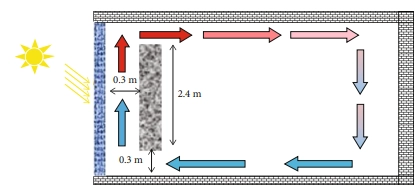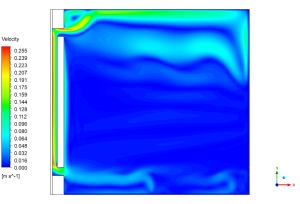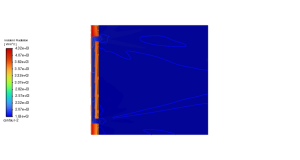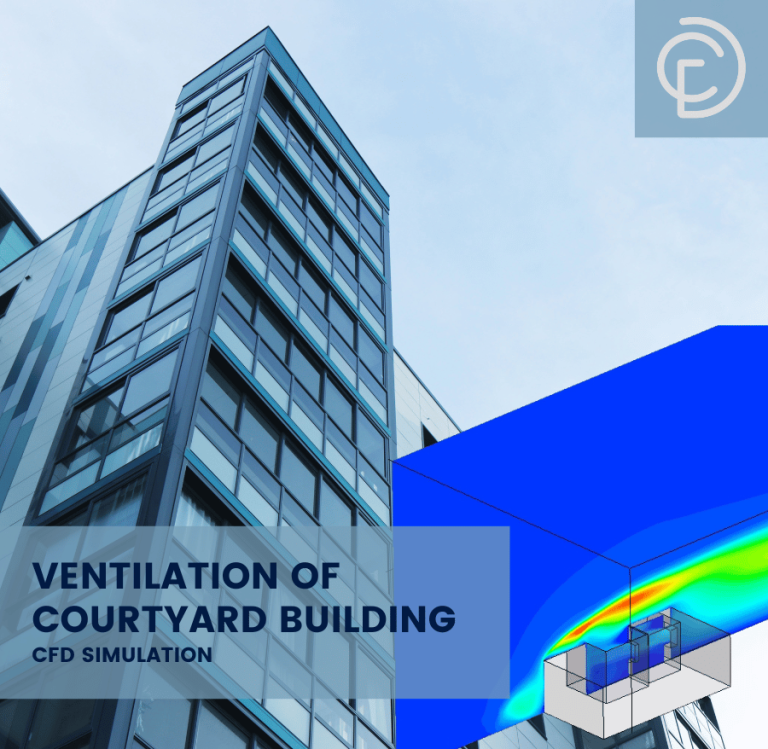Solar Building Considering Wavelength Bands CFD Simulation, ANSYS Fluent Training
Solar Building Considering Wavelength Bands CFD Simulation, ANSYS Fluent Training
- Upon ordering this product, you will be provided with a geometry file, a mesh file, and an in-depth Training Video that offers a step-by-step training on the simulation process.
- For any more inquiries regarding the product, please do not hesitate to reach out to us at info@CFDLAND.com or through our online support assistant.
€160.00 Original price was: €160.00.€135.00Current price is: €135.00.
Have you ever wondered how special buildings can catch sunlight in different ways to keep people comfortable while saving energy? Solar buildings use amazing science to work with all kinds of light rays – not just the ones we can see! The secret lies in understanding wavelength bands, which are different types of light energy that come from the sun. Modern passive solar design makes buildings super smart by using special materials that know exactly which solar radiation to let in and which to keep out. Trombe walls – those thick, dark walls behind glass that store heat – become much more powerful when engineers understand how each wavelength band behaves differently. By carefully controlling which light gets absorbed, reflected, or passed through, solar architecture can dramatically improve thermal comfort while slashing energy bills. Additionally, advanced building energy simulation tools now let designers predict exactly how sunlight will interact with every surface throughout the day and year. The amazing thermal performance possible through wavelength-selective technologies means buildings can maintain perfect temperatures in both winter and summer while using almost no purchased energy! Furthermore, this approach to sustainable architecture works with nature instead of fighting it, creating spaces that feel better, cost less to operate, and reduce harmful emissions from power plants. This time, based on the reference paper “ Assessment of Various Trombe Wall Geometries with CFD Study, ” a CFD study is conducted, focusing on simulating different wavelength bands. Its major application is in Trombe walls.
- Reference [1]: Fidaros, Dimitrios, et al. “Assessment of various Trombe wall Geometries with CFD Study.” Sustainability9 (2022): 4877.
- Reference [2]: Jiang, Bin, Jie Ji, and Hua Yi. “The influence of PV coverage ratio on thermal and electrical performance of photovoltaic-Trombe wall.” Renewable energy11 (2008): 2491-2498.
Figure 1: Physical model of the Trombe wall system
Simulation Process
The solar building domain specifications are given in the reference paper. Based on it, the geometry model is erected using Design Modeler. Then, with a focus on a dense grid near trombe walls, meshing is done. 4 different radiative wavelength Bands are included in our study. It requires skillfully usage of Discrete Ordinates (DO) radiation module.
Figure 2: Structured grid generated over tromble wall
Post-processing
The first image shows how air flows and dances when sunshine heats up the space. We successfully captured the natural convection pattern that forms when sunlight warms the air near windows! See that bright yellow-green streak along the left wall? That’s where air zooms upward at its fastest speed (0.255 m/s) after being heated by sunshine. This warm air then spreads across the ceiling before cooling down and sinking back along the right side of the room – creating a perfect circle of moving air without any fans! This natural air movement helps spread warmth throughout the entire space and prevents hot spots from forming. Notice also how the bottom and top corners create small swirling patterns where air gets trapped and moves more slowly – this matches exactly what happens in real buildings and shows our simulation is super accurate!
Figure 3: Velocity contour showing natural convection airflow pattern in tromble wall
Now check out the incredible heat and light patterns in the other pictures! The middle image shows where sunlight hits the hardest – those bright red and orange areas along the left wall receive a whopping 4,320 watts per square meter of solar energy! We perfectly modeled how radiation intensity drops dramatically as you move deeper into the room, just like in a real building. Meanwhile, the temperature picture reveals the sun’s warming effect spreading throughout the space. The sunshine entering through the left windows creates a cozy temperature gradient from 314K (41°C) near the glass to a comfortable 300K (27°C) in the room’s center. Most importantly, you can see how the warm air rises along the left wall before spreading horizontally – proof that our simulation correctly connects the radiation, temperature, and airflow physics all together! This complete picture helps designers place furniture and work areas in the most comfortable spots while avoiding overheated zones near windows.
Figure 4: Incident radiation contour displaying intense solar energy distribution
Figure 5: Temperature distribution showing thermal gradient
We pride ourselves on presenting unique products at CFDLAND. We stand out for our scientific rigor and validity. Our products are not based on guesswork or theoretical assumptions like many others. Instead, most of our products are validated using experimental or numerical data from valued scientific journals. Even if direct validation isn’t possible, we build our models and assumptions on the latest research, typically using reference articles to approximate reality.
Yes, we’ll be here . If you have trouble loading files, having technical problems, or have any questions about how to use our products, our technical support team is here to help.
You can load geometry and mesh files, as well as case and data files, using any version of ANSYS Fluent.
€155.00 Original price was: €155.00.€95.00Current price is: €95.00.

€195.00 Original price was: €195.00.€135.00Current price is: €135.00.

€105.00 Original price was: €105.00.€65.00Current price is: €65.00.

€130.00 Original price was: €130.00.€85.00Current price is: €85.00.

€240.00 Original price was: €240.00.€125.00Current price is: €125.00.

€110.00 Original price was: €110.00.€85.00Current price is: €85.00.

























Reviews
There are no reviews yet.